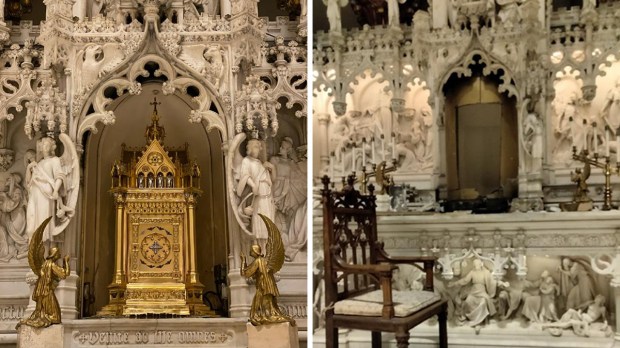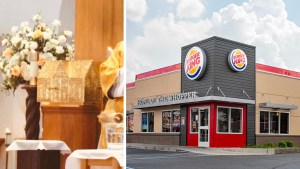The theft of a tabernacle from a church in Brooklyn, New York, is the latest in a rash of thefts and desecration of Catholic churches that have taken place around the world in recent years.
Fr. Frank Tumino, pastor of St. Augustine Church, discovered the gold and silver tabernacle had been removed from its place in the sacristy on Saturday. The burglars used power tools to “forcibly cut open” its protective metal case, the New York City Police Department said.
Consecrated Communion hosts lay amid the rubble and metal shavings found on the ground, making this crime particularly egregious— more so than the toppling statue or other act of vandalism.
“This is devastating, as the tabernacle is the central focus of our church outside of worship, holding the Body of Christ, the Eucharist, which is delivered to the sick and homebound,” Father Tumino told the Tablet. “To know that a burglar entered the most sacred space of our beautiful church … is a heinous act of disrespect.”
The theft of the historic tabernacle made headlines, however, not just because of the desecration of the church, but, more likely, because the tabernacle is said to be worth $2 million, an astounding figure, even considering today’s inflated prices.
A grand tabernacle for a grand church
When St. Augustine Church was built at the end of the 19th century, no expense was spared to erect a sanctuary equal to the great cathedrals of Europe. The tabernacle used to house he Blessed Sacrament was crafted in that same grand style.
In the 1880s, when St. Augustine’s parish had outgrown its temporary church built to accommodate a growing Catholic presence in Brooklyn, its pastor, Fr. Edward W. McCarty, purchased land in newly fashionable Park Slope neighborhood of Brooklyn. His goal, according to a history of the parish, was to build the finest church in the city. To that end, in 1887 he invited architectural firms to enter a contest to design the new church, with an unheard of budget of $300,000.
When the stately Gothic Revival church was completed by Parfitt Brothers, a Brooklyn-based firm who won the contest with their design, it was met with rave reviews. To this day St. Augustine Church is often referred to as the “Notre Dame” or “Cathedral” of Park Slope.
Among its elaborate decorations was the centerpiece of the church, the exquisite tabernacle. Crafted of 18k gold and silver by Alfred E. Parfitt in 1895, the tabernacle was adorned with precious gems. According to the church’s website, all of the metals and stones came from coins and jewelry donated by parishioners.
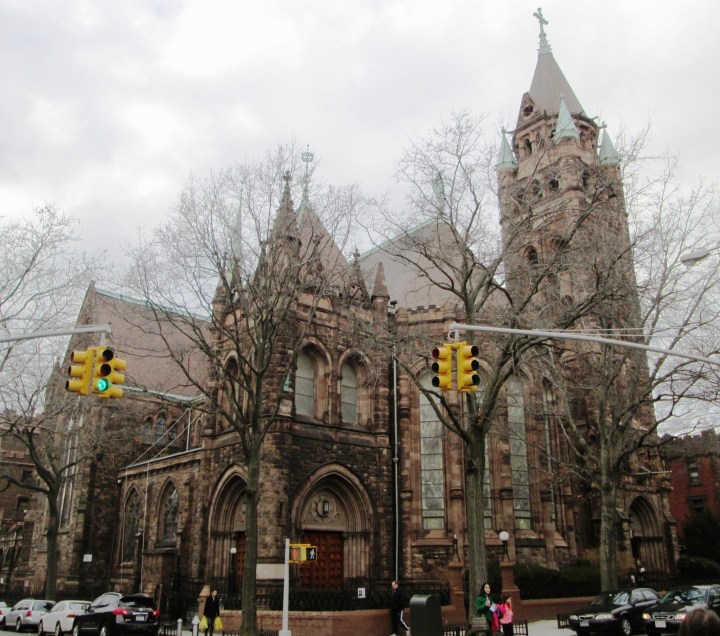
A cutting-edge 19th-century security system
The caretakers of the new St. Augustine church were well aware that their tabernacle would be a temptation to burglars. It was decided that a special security system would need to be built around the tabernacle to protect it from theft, yet allow it to be accessed during Mass. Tasked with this mission, a Mr. E. Stancliff constructed a safe that successfully deterred thieves for over 125 years — until last week.
The innovative security system was featured in the January 15, 1898, issue of The Electric World, a weekly journal documenting advances in electrical technology.
The article, “An Electrically Operated Burglar-Proof Safe,” describes the safe, which was bolted to the carved marble baldachinno surrounding the tabernacle. Solid metal plates slid on ball bearings driven by a motor located in the church’s basement, and opened and closed around the tabernacle:
“The safe is made of Harveyized steel plates, 1 inch in thickness and forming three leaves, each spanning 120 degrees about the axis of the cylinder and curving over at the top to a point at at the apex of the dome…
“These leaves are covered with gold leaf, and give no visible indication of their strength and solidity. The rolling leaves being very heavy are mounted on ball and roller bearings, and are turned by solidly built worm gears, placed below the altar table, and driven by belting from a motor in the basement.”
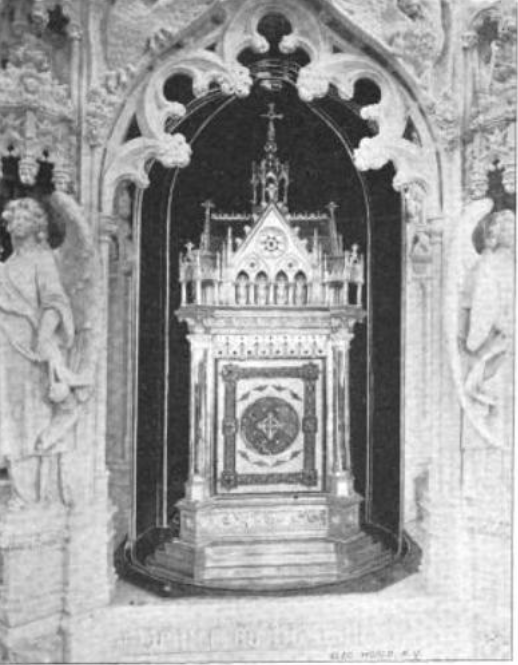
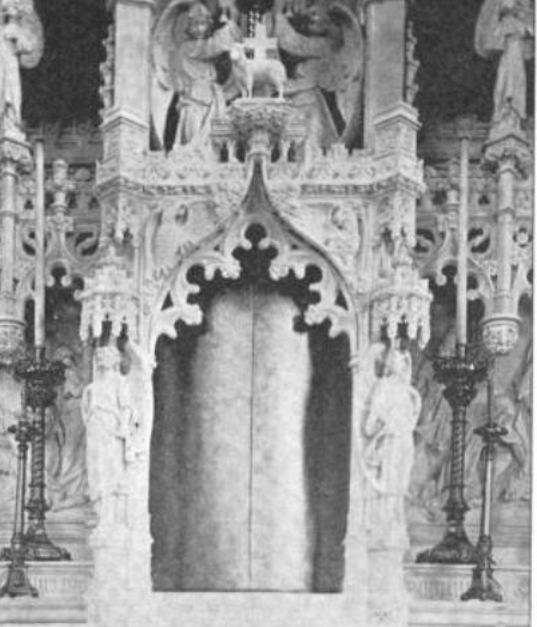
The article explains how the security system managed to protect the tabernacle for over a century:
“Many parts of the mechanism are connected with a burglar alarm circuit, which runs to the nearest police station, so that tampering with any of the apparatus will immediately send an alarm. The floor of the safe is mounted on vulcanized fiber, and separated by a very slight clearance from the steel walls about it. Any attempt to force the walls will bring the two in contact, and close the burglar alarm circuit, and any drilling of the walls will effect the same through the iron chips which will fall across the narrow gap. In this way practically perfect immunity from any risk of damage is assured,” the article explained.
According to Fr. Tumino, the thieves disabled the surveillance system during the burglary, removing the DVR from the security camera system.
Adriana Rodriguez, spokesperson from the Diocese of Brooklyn, could not confirm whether the original 19th-century security system was still connected to the police department. As of Tuesday afternoon, she said, the tabernacle has not been located.
